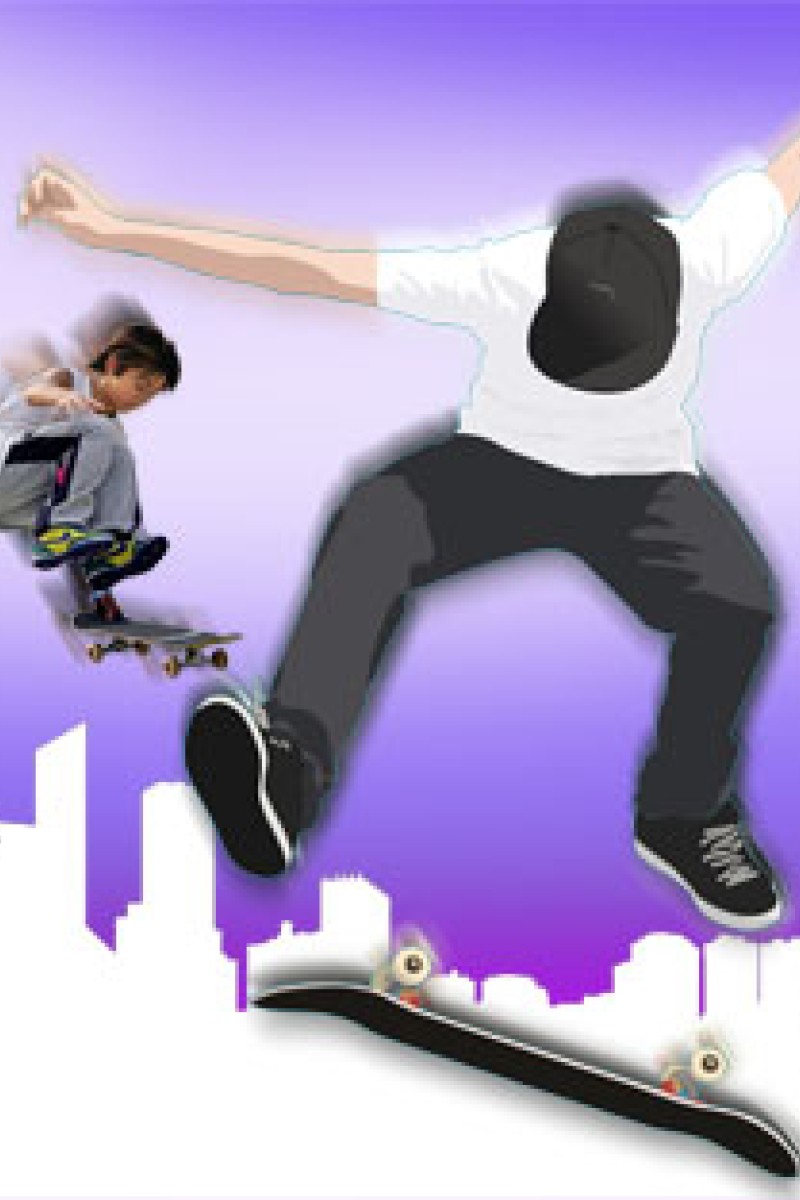 iii
iiiSliding down handrails and jumping over obstacles, skateboarders are regarded by some locals as unruly and troublesome. But the introduction of skate parks in recent years has changed public perception of the sport, a veteran skateboarder says.
Previously, public places such as the Immigration Tower in Wan Chai, Sha Tin Town Hall and the Cultural Centre in Tsim Sha Tsui were the local skateboarding meccas. At weekends, they were often packed with hundreds of skateboarders honing their skills.
Apart from leaping up and down stairs, they used kerbs, ledges and handrails. Some even moved litter bins around to create obstacles. The result, however impressive to look at, was less than pleasant on the ears. The boards make a loud rumble when ridden, and a tremendous cracking sound when the wheels slam down after a jump. So it is understandable that police often stop skateboarders from occupying public spots.
'Where could we skate?' says Warren Stuart, a veteran skateboarder and coach of the Hong Kong skateboarding team. 'We skated in public places only because there were no other facilities where we could go.'
He says skate parks became common in countries such as the United States, Australia and Germany about a decade ago, but not here. 'If it was anybody's fault, perhaps it was the government's indifference to people's recreational interests,' Stuart says.
Finally, in April 2004, the Leisure and Cultural Services Department recognised the need and the first public skate park - the Skateboard Arena at Lai Chi Kok Park - was born. A second one opened in Chai Wan in August that year.
Now there are seven skateboard grounds managed by the department, with four more being built or planned. They will all be ready to use in two years, making it 11 skate parks altogether, which is a "very dense" concentration for a small city like Hong Kong, Stuart says.
As a result, skateboarders usually don't skate in public places anymore, causing much less trouble for everybody. So the image of skateboarders as young rebels has faded in recent years, he says. 'It's a good sport that's finally shaking off those negative stereotypes.'
Local skate parks, though ill-designed, are very clean, Stuart says. Parents often visit with their children, and they have some good fun together.
'It also takes time for the government to realise what kind of facilities we need. They considered building skate parks similar to building basketball courts - all standardised. But that's wrong,' he says.
'Although many skate parks the government has built are poorly designed, I wouldn't complain because we have to be grateful. I had no place to skate when I was a teenager.'
The lowdown of the most popular skate parks in the city
1 Skateboard arena at Lai Chi Kok Park (Lai Wan Road): at about 1,600 square metres, it's the biggest in the city. More than 10 tracks of varying curvatures and heights cater for skateboarders of different levels. There are two half-pipes and several quarter-pipes, single rails and fun boxes. Most of the ramps are above 1.8 metres. Cyclists and in-line roller skaters can also use the space. The park is open from 7am to 10pm daily.
2 Chai Wan skateboard park (345 San Ha Street): this smaller, 630-square-metre park has three zones catering to beginner, intermediate and advanced skateboarders. A mellow mini ramp is great for beginners.
<!--//--><![CDATA[// ><!-- PDRTJS_settings_1530037 = { "id" : "1530037", "unique_id" : "default", "title" : "", "permalink" : "" }; //--><!]]>
